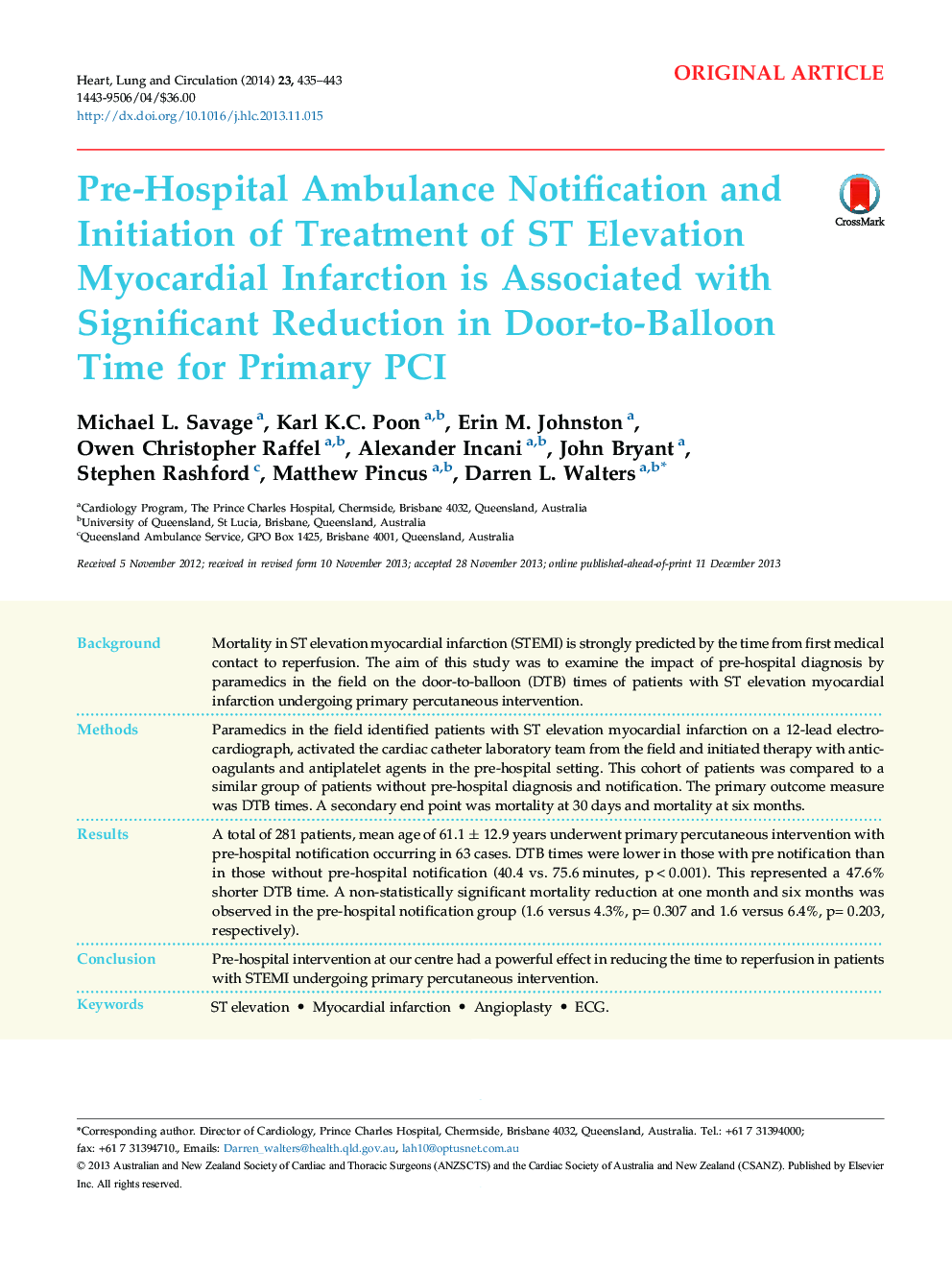| Article ID | Journal | Published Year | Pages | File Type |
|---|---|---|---|---|
| 2918217 | Heart, Lung and Circulation | 2014 | 9 Pages |
BackgroundMortality in ST elevation myocardial infarction (STEMI) is strongly predicted by the time from first medical contact to reperfusion. The aim of this study was to examine the impact of pre-hospital diagnosis by paramedics in the field on the door-to-balloon (DTB) times of patients with ST elevation myocardial infarction undergoing primary percutaneous intervention.MethodsParamedics in the field identified patients with ST elevation myocardial infarction on a 12-lead electrocardiograph, activated the cardiac catheter laboratory team from the field and initiated therapy with anticoagulants and antiplatelet agents in the pre-hospital setting. This cohort of patients was compared to a similar group of patients without pre-hospital diagnosis and notification. The primary outcome measure was DTB times. A secondary end point was mortality at 30 days and mortality at six months.ResultsA total of 281 patients, mean age of 61.1 ± 12.9 years underwent primary percutaneous intervention with pre-hospital notification occurring in 63 cases. DTB times were lower in those with pre notification than in those without pre-hospital notification (40.4 vs. 75.6 minutes, p < 0.001). This represented a 47.6% shorter DTB time. A non-statistically significant mortality reduction at one month and six months was observed in the pre-hospital notification group (1.6 versus 4.3%, p= 0.307 and 1.6 versus 6.4%, p= 0.203, respectively).ConclusionPre-hospital intervention at our centre had a powerful effect in reducing the time to reperfusion in patients with STEMI undergoing primary percutaneous intervention.
